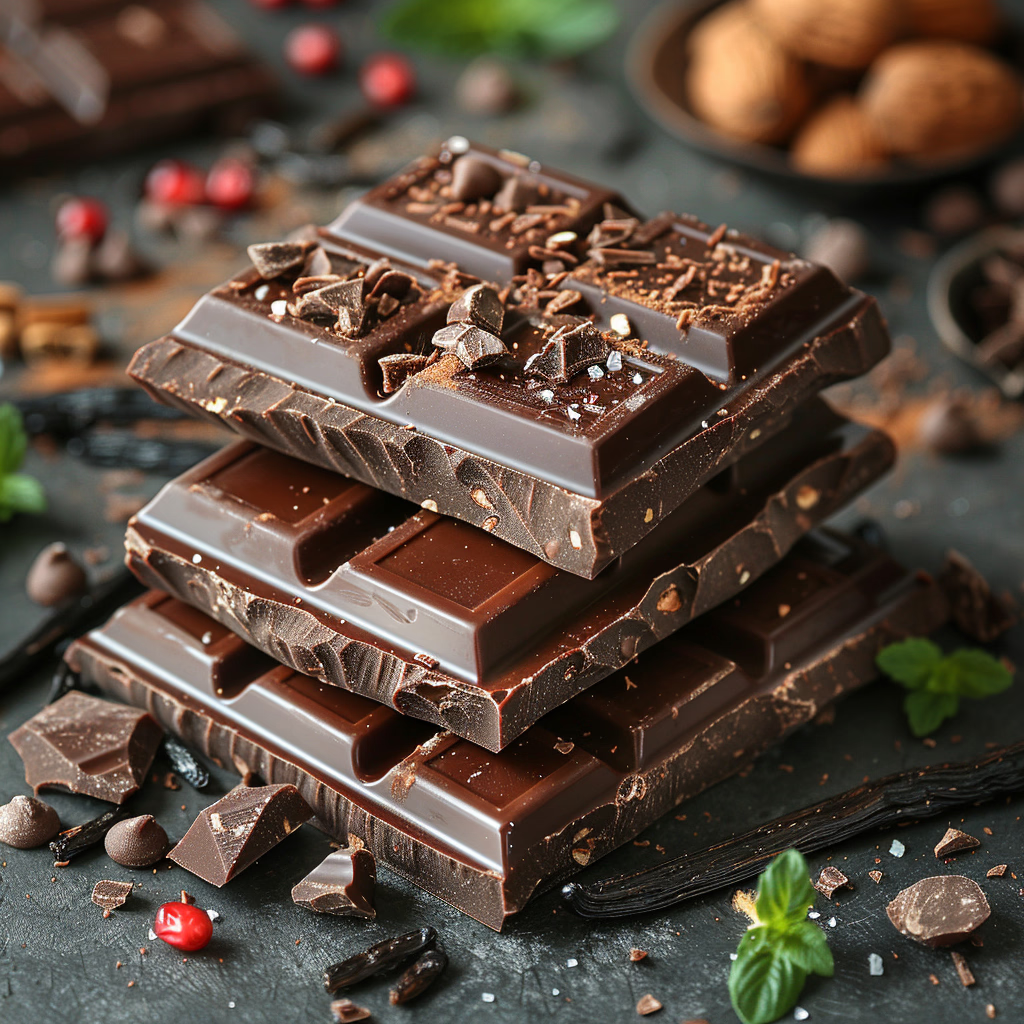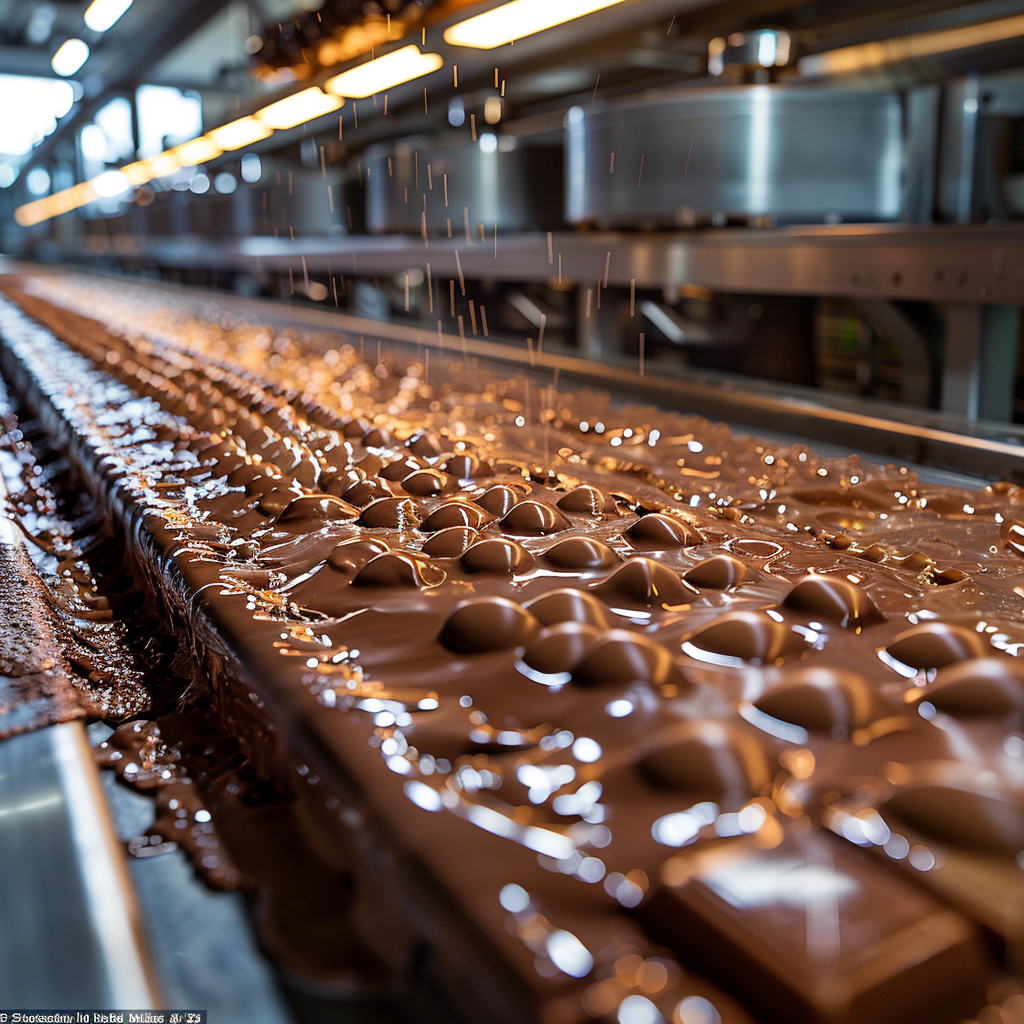Milk chocolate has captured the hearts of millions worldwide with its sweet, creamy, and rich flavor. But have you ever wondered what goes into making this delectable treat? This article dives deep into the core ingredients in milk chocolate, exploring how each component contributes to its flavor, texture, and appearance. From the foundational ingredients like cocoa solids to the optional additives that enhance its appeal, you’ll gain a complete understanding of what makes milk chocolate so irresistible.
Part 1: Introduction to Milk Chocolate
Understanding Milk Chocolate
Milk chocolate, a global favorite, is a sweetened chocolate made with added milk in various forms, such as milk powder or condensed milk. It’s loved for its creamy texture and milder taste compared to dark chocolate, making it accessible to a broader audience. But there’s more than meets the eye when it comes to understanding its complexity.
Historical Background of Milk Chocolate
Milk chocolate has an intriguing history that dates back to the 19th century. It was first created by Daniel Peter, a Swiss chocolatier, in collaboration with Henri Nestlé, who supplied condensed milk. Their breakthrough marked a pivotal moment in the confectionery industry. By the late 1800s, milk chocolate had gained immense popularity, evolving into the widely beloved treat it is today. Over time, advancements in chocolate-making processes and ingredient sourcing have only enhanced its flavor profile.
Popularity and Consumption Trends
Milk chocolate’s popularity continues to soar across the globe. From being a key ingredient in desserts and candies to an indulgent snack, it caters to diverse tastes and preferences. Data suggests that milk chocolate accounts for a significant share of global chocolate consumption, outpacing dark chocolate in many regions. Its creamy, sweet profile makes it especially popular among children and those with a sweet tooth.
Part 2: Core Ingredients of Milk Chocolate
Cocoa Solids in Milk Chocolate
Cocoa solids are the essence of any chocolate, and milk chocolate is no exception. They are derived from roasted cocoa beans, which are processed to separate cocoa butter from cocoa mass. This ingredient provides the rich chocolatey flavor that defines milk chocolate, though in milder proportions compared to dark chocolate.
Interestingly, the cocoa content in milk chocolate typically ranges between 25% and 40%, which is lower than its darker counterpart. This allows for a creamier, less bitter taste that appeals to a wide audience. In premium milk chocolate, higher cocoa content can add depth while still maintaining its sweet profile.
Role of Cocoa Butter
Cocoa butter, a natural fat extracted from cocoa beans, is a critical ingredient in milk chocolate. Its primary function is to give chocolate its smooth texture and glossy appearance. This fat melts at just below body temperature, which is why chocolate has that luxurious mouthfeel and melts so perfectly in your mouth.
Additionally, cocoa butter stabilizes the chocolate, making it easier to mold into bars, truffles, or other confections. High-quality milk chocolate often contains a generous amount of cocoa butter, ensuring a creamy and rich consistency.
Importance of Sugar
Sugar is a defining component of milk chocolate, balancing the bitterness of cocoa solids and creating a sweet and satisfying flavor. The amount of sugar varies depending on the brand and type of milk chocolate. Most milk chocolate contains 30–50% sugar, which contributes significantly to its appeal.
Besides enhancing sweetness, sugar also plays a role in the chocolate’s texture. It helps achieve that satisfying snap when you break a bar of chocolate and complements the richness of other ingredients like milk solids and cocoa butter.
Milk Solids and Their Contribution
Milk solids are what set milk chocolate apart from dark or white chocolate. These can include milk powder, condensed milk, or liquid milk. They contribute to the creamy texture and mild flavor that milk chocolate is known for. The milk solids also help emulsify the chocolate mixture, creating a uniform consistency.
Depending on the type of milk used, there may be subtle variations in flavor. For instance, powdered milk may lend a slightly caramelized note, while fresh milk provides a purer creaminess.
Part 3: Additional Components in Milk Chocolate

Emulsifiers: Ensuring Consistency
Milk chocolate often contains emulsifiers like lecithin, usually derived from soy or sunflower seeds. These additives serve an essential purpose: they help blend the fat and water-based ingredients, ensuring a smooth texture and preventing separation.
While emulsifiers are used in small quantities (typically less than 1% of the chocolate), their impact on the final product is significant. They enhance the chocolate’s stability during production and storage, ensuring that every bite is as perfect as the first.
Flavor Enhancers: Vanilla and Beyond
To elevate the natural flavors of cocoa, many milk chocolates include vanilla or other flavoring agents. Vanilla is a common addition, either as pure extract or synthetic vanillin. It complements the sweetness and smoothness of milk chocolate, creating a more rounded flavor profile.
Other potential flavor enhancers include spices like cinnamon or nutmeg, though these are less common. These subtle additions can make a world of difference in enhancing the chocolate’s aroma and taste.
Optional Additives and Their Effects
Some milk chocolates include additional ingredients to enhance their appeal. These can range from caramel bits and nuts to crispy rice or fruit pieces. While optional, these additives contribute to the texture, flavor, and overall experience of enjoying milk chocolate.
For instance, nuts like almonds or hazelnuts add a satisfying crunch, while caramel bits create bursts of sweetness. It’s worth noting that these ingredients are carefully selected to complement, not overpower, the milk chocolate’s signature profile.
Part 6: Frequently Asked Questions (FAQs)
What makes milk chocolate different from dark chocolate?
Milk chocolate contains added milk solids and a lower percentage of cocoa solids compared to dark chocolate. These milk solids give it a creamier texture and sweeter flavor, making it less intense than dark chocolate. Additionally, milk chocolate usually has more sugar and less bitterness, which appeals to a wider audience.
Why is cocoa butter essential in milk chocolate?
Cocoa butter plays a vital role in giving milk chocolate its smooth texture and glossy appearance. It also ensures that the chocolate melts evenly in your mouth, providing a luxurious and satisfying experience. Without cocoa butter, the chocolate would lack its characteristic creaminess and snap.
Are emulsifiers in milk chocolate safe to consume?
Yes, emulsifiers like lecithin, commonly used in milk chocolate, are generally safe for consumption. These ingredients help stabilize the mixture and ensure a consistent texture. They are added in very small quantities and are closely regulated to meet food safety standards.
Does milk chocolate offer any health benefits?
While milk chocolate is often considered a treat, it does provide some health benefits. The cocoa solids contain antioxidants, such as flavonoids, which may support heart health and boost mood. Milk solids contribute calcium and protein, which are essential for bone health. However, moderation is key due to its high sugar and fat content.
Can milk chocolate be made without sugar?
Yes, sugar-free milk chocolate options are available, typically sweetened with alternatives like stevia, erythritol, or monk fruit extract. These versions cater to those who want to reduce sugar intake while still enjoying the creamy and sweet taste of milk chocolate.
What are some common additives in milk chocolate?
Milk chocolate may include additives like vanilla for flavor, salt to enhance sweetness, and stabilizers to improve texture. Additionally, inclusions like nuts, caramel, or fruit pieces are popular for adding variety and texture to milk chocolate products.
Part 7: Milk Chocolate Recipe and Step-by-Step Guide
Homemade Milk Chocolate Recipe
Making milk chocolate at home is a fun and rewarding experience. With just a few key ingredients, you can create a creamy, sweet treat that rivals store-bought options. Here’s a detailed recipe that guides you through the process.
Ingredients
- 100g cocoa butter (for the smooth and glossy texture)
- 50g cocoa powder (for the chocolatey base flavor)
- 50g powdered sugar (for sweetness)
- 50g milk powder (to give that creamy taste)
- 1 tsp vanilla extract (optional, for enhanced flavor)
- A pinch of salt (optional, to balance sweetness)
Step-by-Step Instructions
- Prepare the Ingredients
- Measure all the ingredients carefully for consistent results. Chop the cocoa butter into small pieces to ensure it melts quickly and evenly.
- Melt the Cocoa Butter
- Use a double boiler to melt the cocoa butter. Place a heatproof bowl over a saucepan with simmering water, making sure the bottom of the bowl doesn’t touch the water. Stir continuously until the cocoa butter is fully melted.
- Combine Dry Ingredients
- In a separate bowl, sift the cocoa powder, powdered sugar, and milk powder. Sifting ensures there are no lumps and makes mixing easier.
- Mix the Ingredients
- Gradually add the sifted dry ingredients to the melted cocoa butter, whisking constantly to avoid clumps. Continue stirring until the mixture becomes smooth and uniform.
- Add Vanilla and Salt (Optional)
- Stir in the vanilla extract and a pinch of salt for added depth and balance. These are optional but recommended for enhancing the flavor.
- Temper the Chocolate
- Pour the chocolate mixture onto a cool marble slab or a flat surface and spread it out with a spatula. Then scrape it back into a bowl. Repeat this process a few times to temper the chocolate, which gives it a shiny finish and a crisp snap.
- Pour into Molds
- Pour the tempered chocolate into silicone molds or a lined baking tray. Tap the molds gently to remove any air bubbles.
- Set the Chocolate
- Allow the chocolate to cool at room temperature until it solidifies. Alternatively, place it in the refrigerator for quicker results.
- Remove and Enjoy
- Once set, remove the chocolate from the molds and store it in an airtight container. Enjoy your homemade milk chocolate as a snack or gift it to loved ones.
Part 8: Conclusion
Summarizing the Components of Milk Chocolate
Milk chocolate is much more than a simple sweet treat; it is a carefully crafted blend of high-quality ingredients that deliver a perfect balance of flavor, texture, and sweetness. The combination of cocoa solids, cocoa butter, sugar, and milk solids forms the foundation of its creamy, sweet profile. These ingredients are carefully sourced and processed to achieve the smoothness and flavor that milk chocolate lovers around the world adore.
Optional additions like emulsifiers and flavor enhancers such as vanilla ensure consistency and elevate its taste. Moreover, inclusions like nuts or caramel add an exciting twist, catering to varied preferences. Whether you prefer a plain bar or one with flavorful inclusions, the artistry behind milk chocolate production is undeniable.
The Perfect Balance Between Indulgence and Moderation
While milk chocolate is a delightful indulgence, it’s essential to consume it in moderation due to its sugar and fat content. Understanding the role of each ingredient can help you make informed choices and appreciate the craftsmanship behind every piece. Whether you’re savoring a luxurious truffle or enjoying a simple chocolate bar, knowing what’s inside can enhance your experience.

